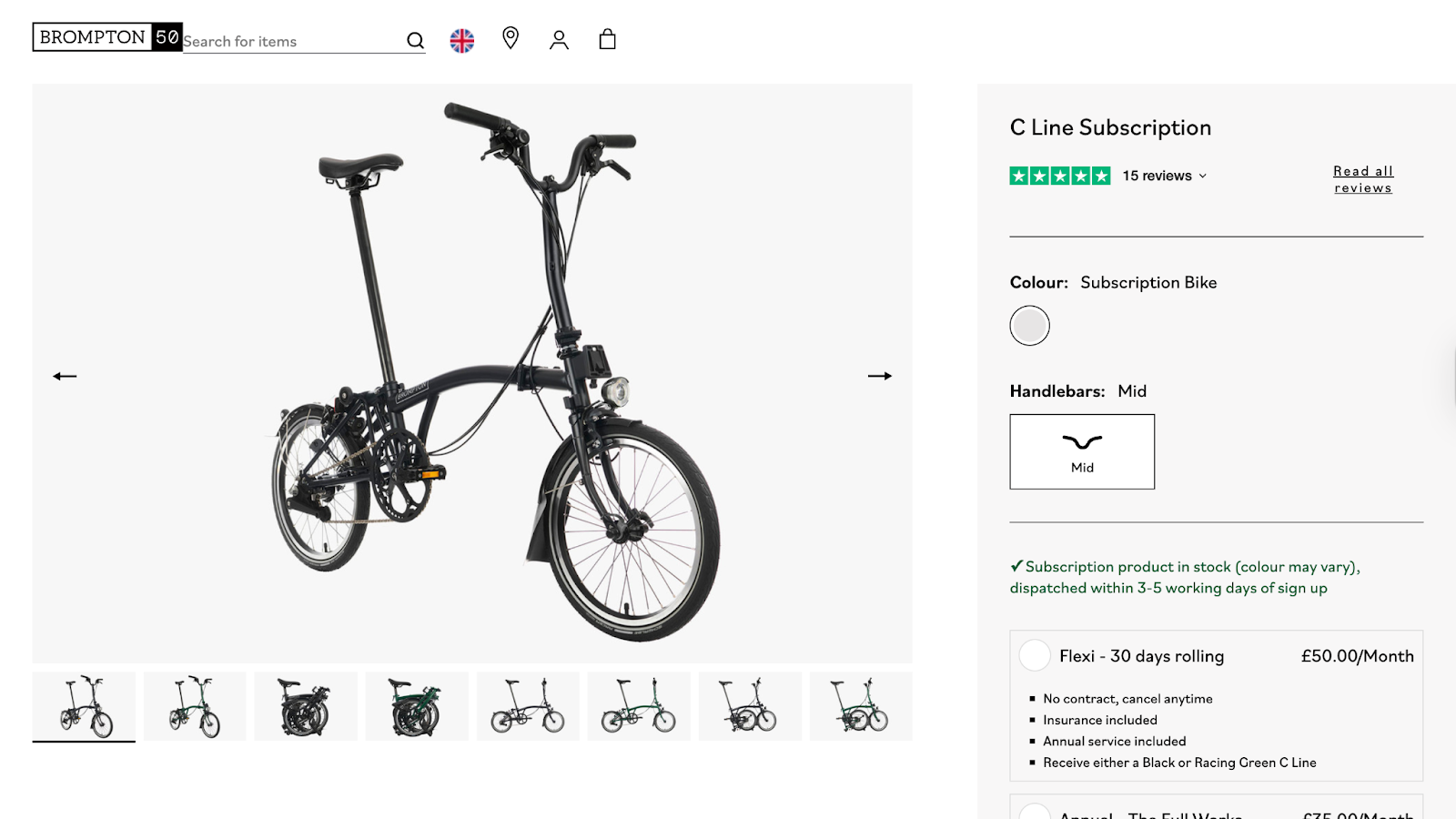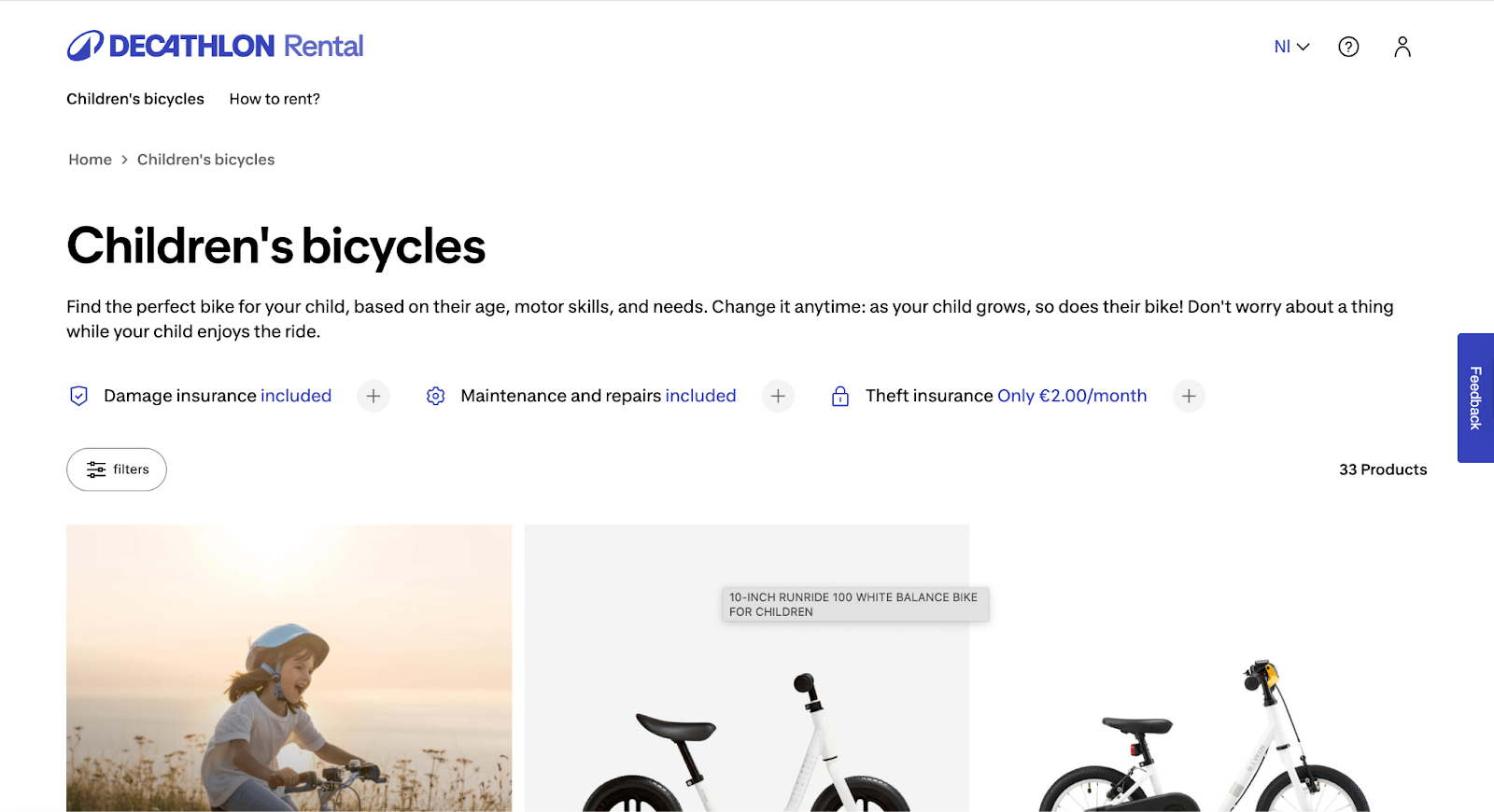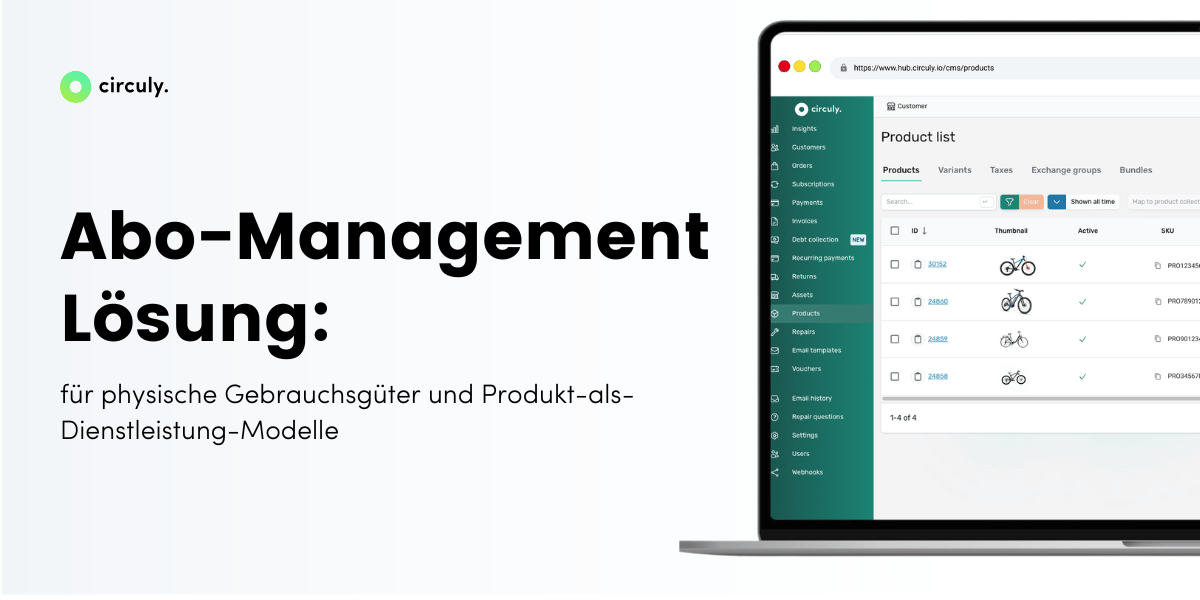Do people really subscribe to bikes? Yes, they do. In fact, at circuly, many of us do.
Our co-founder Nick Huijs rides a Riese & Müller e-bike through a subscription, and several parents on our team use bike subscriptions from services like Bike Club and StrollMe so their kids always have the right size bike — with maintenance, insurance, and easy upgrades built in.
It’s not just us. More and more people are choosing to pay a monthly fee for a bike instead of buying one outright. Whether it’s to commute across the city without worrying about theft or to keep up with how fast children grow, bike subscriptions are turning what used to be a major purchase into a simple, predictable service — like your phone plan, but for getting around.
So what exactly is a bike subscription?
At its simplest, it’s a way to offer bikes to customers without selling them outright for a one-time price. Instead of owning the bike, the customer pays a recurring fee to access it. That fee might cover just the use of the bike, or it might bundle in services like maintenance, insurance, repairs, or upgrades.
This model has many names — bike subscription, bike rental, bike leasing, bike-as-a-service — and in practice, brands often use these terms interchangeably even if they mean different things in accounting or tax law. What matters most is that the customer isn’t buying the bike as a product. They’re paying for the outcome the bike enables — whether that’s commuting to work, making deliveries, or giving their kids a bike that always fits.
If you want to understand exactly how these models differ — from a legal, financial, and even customer perspective — we’ve broken that down in detail in this guide: Financing vs. rent-to-own vs subscription
Curious which brands are already offering bike subscriptions? Check out our in-depth list of top bike subscription, lease & rental companies worldwide.
Why subscriptions exist at all: shifting focus from the product to the result.
Subscriptions aren’t simply a clever pricing tactic; they exist because they align with what customers truly care about: the outcome, not the object.
No one buys a bike because they’re passionate about owning a metal frame and wheels.
They buy it — or subscribe to it — because they want reliable, flexible transportation.
“At Swapfiets, we believe that bikes are the key to a more liveable city. … With a circular model, we try to centralise this. You only pay for the use of the bike. When you no longer use it, you return it. If it needs repair, we fix it for you.” Richard Burger | Director of Sustainability @ Swapfiets
It’s the same logic behind many other industries shifting from product ownership to service-based access:
- Automotive brands are increasingly offering car subscriptions or leases, where customers pay a monthly fee that includes maintenance and insurance, as people prioritise convenient mobility over traditional car ownership.
- High-end coffee machines are sometimes offered on subscription plans that include free servicing and discounted beans, because customers ultimately want great coffee from a high-quality machine.
- Even household appliances like washing machines or dishwashers are now offered by many manufacturers as “pay-per-use” or subscription models, bundling repairs and upgrades. The real promise is clean clothes or spotless dishes, without surprise repair bills or early replacements.
Bike subscriptions fit perfectly into this pattern. They bundle maintenance, repairs, insurance, and sometimes doorstep service to deliver what the customer truly wants: hassle-free movement from A to B.
It’s not that someone will visit every month to check your brakes — it’s the confidence that if something does happen, you’re covered.
That simple promise dramatically increases the perceived value. It turns a bike from something you have to worry about into something that just works, month after month.
Why are manufacturers, retailers, and new startups all getting into subscriptions?
It’s not just customers who see the value in bike subscriptions. More and more businesses — from traditional bike manufacturers to global retailers to born-for-subscription startups — are building their models around this approach. Each has their own reasons and ways of doing it.
Manufacturers: moving from pure sales to hybrid models
For decades, bicycle manufacturers made their money through one-time sales. They produced bikes, sold them through dealers, and might not see that customer again for years, if ever.
Now, many manufacturers are experimenting with subscriptions. Among all the benefits of a subscription model, the most commonly agreed upon incentives tend to be the following:
- a way to diversify revenue,
- reach new segments,
- build stronger long-term relationships,
- prolongue product lifecycle
Take Brompton, the iconic British folding bike brand. They still sell bikes outright, but also offer a subscription program where customers can pay monthly to use a Brompton, with servicing and insurance included. This opens the door for people who might hesitate at the upfront cost — or only need a bike for a season — while keeping them connected to Brompton’s ecosystem.

“There is a significant shift towards cycling now more than ever, but not everyone wants to or can afford to buy a bike outright. … we wanted to give the public another option which allows them to keep a bike for longer periods.” Julian Scrivens, MD of Brompton Bike Hire
Similarly, premium e-bike brands like Riese & Müller support leasing and subscription pilots through retail partners and platforms, because it’s a powerful way to get more people experiencing their bikes, ultimately driving sales and brand loyalty.
“During these current times we are seeing a high demand for alternative delivery possibilities, especially for local companies. With our new RENT concept we would like to enable small companies in particular to switch easily to eCargo Bikes for fast transport of goods delivered carbon neutrally. We kept the entrance hurdle consciously low by the favourable price”, Heiko Müller, founder and managing director of Riese & Müller.
Retailers: offering subscriptions alongside direct sales
Large sporting goods retailers and local bike shops are also embracing subscriptions, sometimes to solve very practical problems.
Decathlon, for example, runs programs across Europe where parents can subscribe to kids’ bikes, trading up sizes as their children grow.

Instead of repeatedly buying new bikes that are quickly outgrown, families pay a stable monthly fee, with repairs and swaps included. Decathlon still sells bikes as usual, but subscriptions give them a new, predictable revenue stream and keep families coming back.
For retailers, subscriptions also help soften seasonal dips. Instead of relying on peaks in spring or summer, they earn steady income month after month.
Pure subscription-first companies: built for this from day one
Then there are the companies that started entirely around this idea — designed from the ground up to be bike-as-a-service.
Swapfiets is perhaps the best-known example. It launched in the Netherlands with a simple promise: for a flat monthly fee, you’ll always have a working bike. If something breaks, they swap it within 12 hours. This model turned the headache of bike ownership into a seamless service, quickly scaling to over 260,000 subscribers across Europe.
Other examples include Dance, which offers premium e-bikes on subscription with maintenance and theft coverage built in, and Bike Club, which lets parents subscribe to children’s bikes and trade up as needed. These companies don’t even frame themselves as retailers — they’re mobility service providers.
Interested in case studies about bike subscription companies? See more about Bike Club’s expansion to Germany and their operational strategy to ensure scalability & subscription success.
Why this is such an appealing business move
Across all these examples, the business motivations are remarkably similar:
Predictable recurring revenue:
Subscriptions replace uncertain one-off sales with steady monthly income.
Stronger customer relationships:
A subscription means the brand stays part of the customer’s life — it’s no longer a single transaction but an ongoing connection.
Better asset control and circular operations:
Because companies keep ownership of the bikes, they can refurbish and reuse them across multiple subscribers, maximising lifetime value and supporting circular economy goals.
At circuly, we see this shift firsthand. About 23% of the businesses using our platform are in the bike industry, each blending sales and subscriptions in different ways to meet changing customer expectations and build more resilient business models.
How subscriptions support the circular economy
One of the most overlooked reasons so many businesses — from manufacturers to startups — are moving into subscriptions is because it allows them to operate more sustainably.
When companies retain ownership of the bikes, they have every incentive to maximise the value of each asset over its full lifetime. They can:
- Refurbish and redeploy bikes across multiple customers, instead of selling once and losing track of the product.
- Manage maintenance proactively, extending the usable life of each bike.
- Ensure bikes stay out of landfills longer, because they’re not abandoned after a single owner loses interest or upgrades.
This approach turns bikes into part of a true circular business model, where products are designed to be used, recovered, and reused — reducing waste and conserving resources.
For customers, it means they can enjoy a bike without worrying about long-term depreciation or end-of-life disposal. For businesses, it’s not only a more responsible model — it’s also more profitable. A single bike that generates subscription revenue across several customers is worth far more than one sold outright and never seen again.
Wrapping up: why this shift is here to stay
Whether you’re a consumer who wants hassle-free transport, or a business looking to build recurring revenue and stay connected to your customers, bike subscriptions represent a smart evolution.
They flip the focus from simply selling products to delivering outcomes people care about — smooth, reliable mobility, without the baggage of ownership.
That’s why we see manufacturers weaving subscriptions alongside direct sales, why retailers are bundling upgrades and service into monthly plans, and why entirely new companies have launched to offer bikes exclusively on subscription. It’s also why the infrastructure around these models — from maintenance networks to subscription management platforms — is growing so quickly.
At circuly, we have a unique vantage point on this transformation as circuly is the subscription management solution behind some of the major bike subscription brands like Bike Club, Riese & Müller, Zoomer, Loopz Bike, Bravo Bike etc. Nearly a quarter of the businesses we work with today are in the bike industry, each putting their own spin on how to blend ownership, access, and circular operations. We help them handle everything from recurring billing to asset lifecycle tracking, so they can focus on delivering the riding experience — not worrying about spreadsheets and contracts.
%20(10).png)


%20(25).png)
%20(24).png)





.png)





